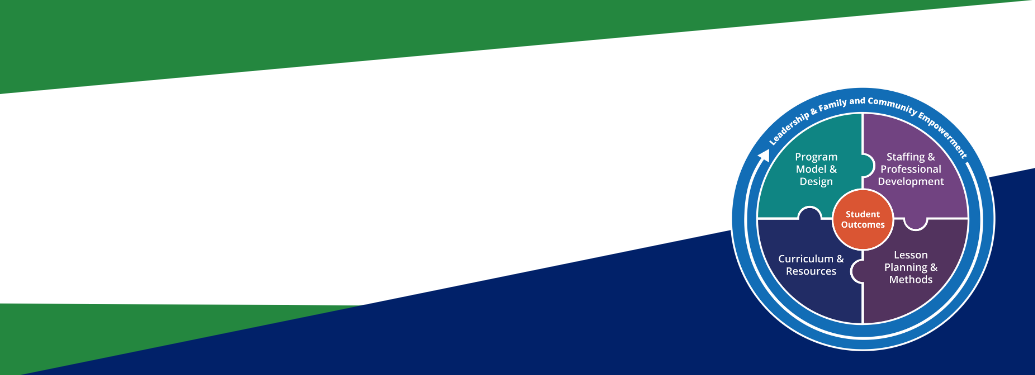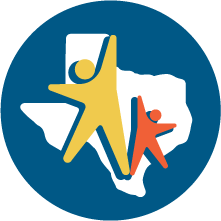
A dual language immersion program model in which the partner language and English are each used for 50 percent of instruction at all grade levels.
A dual language immersion program model in which students are instructed 80 percent of the time in the partner language and 20 percent in English in the first year or two, with the amount of English instruction gradually increasing each year until English and the partner language are each used for 50 percent of instruction
A dual language immersion program model in which students are instructed 90 percent of the time in the partner language and 10 percent in English in the first year or two, with the amount of English instruction gradually increasing each year until English and the partner language are each used for 50 percent of instruction.
A disparity in academic performance between groups of students.
An umbrella term for bilingual programs, dual language and transitional bilingual programs, and ESL programs.
The purposeful development of a visual generated by student input to bridge literacy between languages (i.e., recognizing cognates and patterns).
Intentional approaches to instruction and school environmental systems that focus on students’ assets and make learning meaningful through targeted connections to students’ backgrounds, languages, and life experiences.
Intentional approaches to instruction and school environmental systems that focus on students’ assets and make learning meaningful through targeted connections to students’ backgrounds, languages, and life experiences.
Students who are not proficient in English as determined by the Texas English Language Proficiency Assessment.
A program in which at least 50 percent of instruction is in the partner language and the focus of instruction is on both language and subject content, in both the partner language and English.
A method in which teachers speak in the partner language exclusively during instructional time. The term may be used in immersion programs or in traditional world language classes at any grade level.
Awareness and understanding of one’s own thought processes.
A branch of linguistics that deals with the relation between an awareness of one’s own language use and other factors in a society.
Students who are new immigrants to the U.S. who are English learners
Dual language immersion/one-way is a bilingual/biliteracy program model in which students identified as emergent bilingual students are served in both in another language and English and are prepared to meet reclassification criteria in order to be successful in English-only instruction not earlier than six or later than seven years after the student enrolls in school. Instruction provided in a language other than English in this program model is delivered by a teacher appropriately certified in bilingual education under TEC, §29.061. Instruction provided in English in this program model may be delivered either by a teacher appropriately certified in bilingual education or by a different teacher certified in ESL in accordance with TEC, §29.061. The goal of one-way dual language immersion is for program participants to attain full proficiency in another language as well as English. This model provides ongoing instruction in literacy and academic content in the students’ primary language as well as English, with at least half of the instruction delivered in the students’ primary language for the duration of the program.
A standardized test that measures how well students in Texas learn and apply the state's curriculum standards
An alternative term for “target” language or a language other than English that is used for instruction. This is the preferred term in dual language education, in which both English and the world language are “targets” for developing proficiency.
Students who learn initial “formal literacy” in their first language after age 3 for the first 2-3 years, then add second language formal literacy.
Students who learn initial “formal literacy” in both their first language and second language after age 3.
A process by which students who are bilingual use both languages as one integrated communication system.
